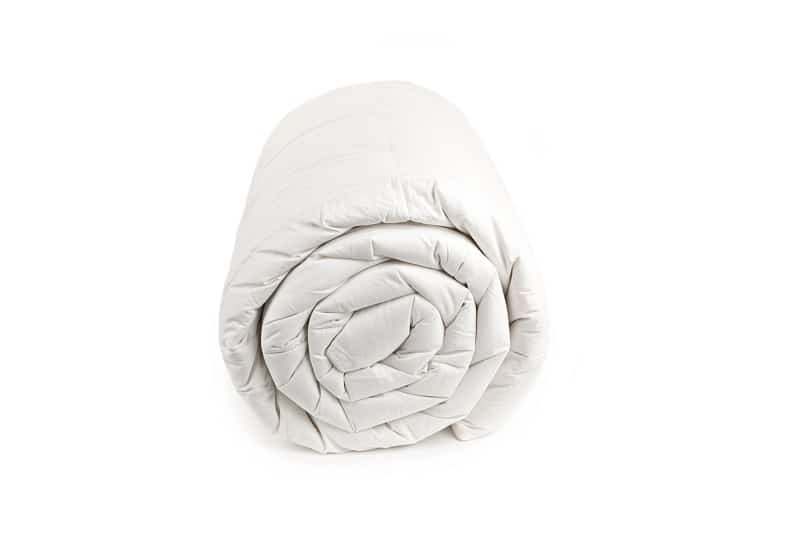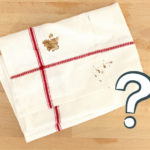Snuggling down in a new, soft, and comfortable duvet is one of the best feelings in the world. Without appropriate care though, your duvet can quickly deteriorate, and it just won’t be the same anymore.
Whilst cleaning a duvet is quite different to washing sheets or blankets, it doesn’t need to be a complicated or difficult process.
Before You Start
One of the most important things to remember when it comes to washing a duvet is that you must check the manufacturer’s label. This will give you crucial information such as whether it can be tumble dried, and if it can be washed in a regular machine, it will give you a recommended temperature too.
Some duvets can be washed in a home machine but only at a low temperature, some require handwashing, and others might need to be professionally dry cleaned. To prevent damage to your duvet, it is absolutely crucial that you stick to the manufacturer’s cleaning guidelines.
It is also worth checking for any open seams or holes that may have sprung up in your duvet over time. If there are holes in the duvet when its machine washed or tumble dried, the filling can fall out.
How to Machine Wash a Duvet

Even if your duvet can be machine washed, there are still precautions and steps that you can take to prevent damage to the delicate fibres.
To begin with, consider the type and amount of laundry detergent that you use. Some harsh detergents can damage gentle fabrics, and these are best avoided when washing a duvet.
Try to stick to gentle detergents, and make sure that you don’t use too much; excess detergent can be just as damaging as harsh alternatives.
Always wash duvets (and quilts too!) on a gentle cycle. Cycles that are designed for heavy, durable fabrics can damage duvets by causing the stitching in the seams to come undone or even tear the material.
It is worth bearing in mind that it still might not be possible to wash your machine washable duvet at home. Duvets can simply be too big to fit into home washing machines without risking damage to the drum, so they may require a trip to the laundromat.
How to Wash a Duvet by Hand
If your duvet does need to be handwashed or it doesn’t fit in your machine, keep in mind that the drying time is likely to be much longer. Duvets that are handwashed will retain a lot more moisture when compared to their machine-washed counterparts.
Duvets need to be completely dry before they are used, so you will need to be patient! If you have a tumble dryer and your duvet fits in it, you can tumble dry it on a very low heat.
As with machine washing, it is crucial that you use only delicate detergents when handwashing a duvet.
You can use a mild detergent that is designed for use on delicate fabrics, or instead consider using bubble bath or a small amount of washing up liquid.
One of the easiest ways to handwash a duvet in most homes is to use the bathtub. Fill the bath with lukewarm water and mix in your chosen detergent, before mixing the two together to activate the detergent.
After you have submerged the duvet completely, you can begin to clean it. Some people might find that the easiest way for them to do it is to climb in the bathtub and walk across it – as if they were crushing grapes for wine.
Others might choose to lean over the side and scrub. Regardless of the method you choose, be gentle!
After cleaning, leave the duvet in the bath whilst it drains. Add fresh water and rinse the duvet repeatedly, until you are sure that there is no detergent left in the fibres.
Once it is rinsed, roll the duvet as tightly as you can to squeeze out as much water as possible. You may need to repeat this multiple times.
In between rolls, unroll the duvet as quickly as you can to prevent the fabric from wrinkling. Finally, hang the duvet to dry, shaking it every now and again to redistribute the fibres.
How to Spot Clean a Duvet
Spills happen, and a light spill on a duvet does not mean that the duvet necessarily needs to be machine washed.
If you catch it soon enough, you can prevent the stain bleeding through the fabric, and the affected area can just be spot cleaned.
To spot clean your duvet, first pinch the outer cover and shake it to move the filling from the direct area.
In some circumstances, it might be worth tying the stained area with a hairband or piece of string to keep it isolated from the rest of the duvet.
Mix a mild detergent with warm water and rub it into the stain. Rinse the area well with clean warm water to remove all traces of detergent and squeeze as much of the water out as possible.
Once it’s rinsed and any hairbands or string has been removed, you can leave the duvet to airdry!

Lover of coffee, painting, and all things cute and fluffy. I’m always on the lookout for easier, more gentle ways to tackle awful household chores.






